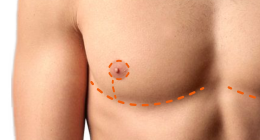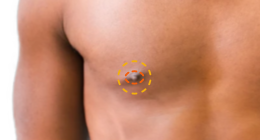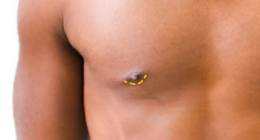Top Surgery Scar Care: Are You Making These Common Mistakes?
 If you search online for information about how to treat Top Surgery scars to reduce their appearance, you'll come across mountains of information, much of it misleading and potentially adverse to your goal. You can use a very basic or a complex approach to scar care but you do need to make sure that you aren't making these common mistakes that can result in poor scarring and cost you more money than you need to spend.
If you search online for information about how to treat Top Surgery scars to reduce their appearance, you'll come across mountains of information, much of it misleading and potentially adverse to your goal. You can use a very basic or a complex approach to scar care but you do need to make sure that you aren't making these common mistakes that can result in poor scarring and cost you more money than you need to spend.
Mistake #1: Overlooking the importance of nutrition, hydration and your surgeon's post-operative instructions in scar formation.
Eating a healthy diet before your Top Surgery is an easy way to get a leg up on your scar care! Certain foods, vitamins and minerals are known to help promote wound healing and reduce the development of scar tissue.
- Eating a diet rich in lean protein before surgery helps promote good wound healing.
- Zinc promotes new skin formation and helps fight infections that can cause more scarring.
- Vitamin C accelerates wound healing and minimizes raised scar formation.
Being dehydrated makes it difficult for your body to deliver the necessary oxygen and nutrients to the wound, delaying healing and making you more susceptible to infections. Drink plenty of water while you're healing!
There's often a time during your Top Surgery recovery when you start feeling pretty good and there's a strong temptation to be more active than you should be. Following your surgeon's recommendations about activity levels and wound care will help you avoid complications, which can cause unnecessary scarring.
Mistake #2: Buying a scar care product solely because someone said it worked for them.
"[Product X] works so well, just look at my results!"
While comments like this are intended to be helpful the truth is that 99% of the time they're flawed. How so? The lack of a scientific test/control methodology. To be able to truly state that a scar product works, a person would need to leave one area of the scar untreated. The treatment is inferred to be effective when the area being treated (test) shows improvement over the area left untreated (control). Scars fade naturally over time, so without a test/control method it's impossible to determine that Product X was the cause of the scar's improvement.
Mistake #3: Ignoring the plentiful evidence that proves why silicone is the #1 recommended form of scar management by healthcare professionals.
For more than 30 years, topical silicone gels, strips and sheets have remained the favored treatment of medical experts in scar management. Silicone scar care products are reasonably affordable and can be easily obtained at a local drug store or online.
Don't forget:
- No smoking! That includes cannabis.
- Follow your surgeon's instructions.
- Keep your scars out of the sun (or use a high SPF sunscreen) for at least one year.
- Genetics plays a role in scar formation.
- Everyone heals differently.
- Scars fade with time.
With the global scar care market estimated to reach a value of almost $35 billion by 2023, it's not surprising that companies are scrambling to put out silicone products that contain various adjuncts and are marketed as the "next big thing" in scar care. While some of these additives have the potential to improve results (vitamin C, arnica, calendula) others are less promising and potentially harmful (onion, vitamin E, mineral oil.) The marketing people at these companies know how important it is to you to reduce the appearance of your scars and they know how to convincingly speak to this desire. Don't be fooled—the efficacy of 100% silicone has been proven in numerous clinical studies and silicone remains your best bet for affordable and effective scar treatment. Feel free to use additional products if you want to cover all your bases, but in terms of topical treatment for scar management your first line of defence should be silicone.
More about Top Surgery Scars:
Last updated: 11/11/22




